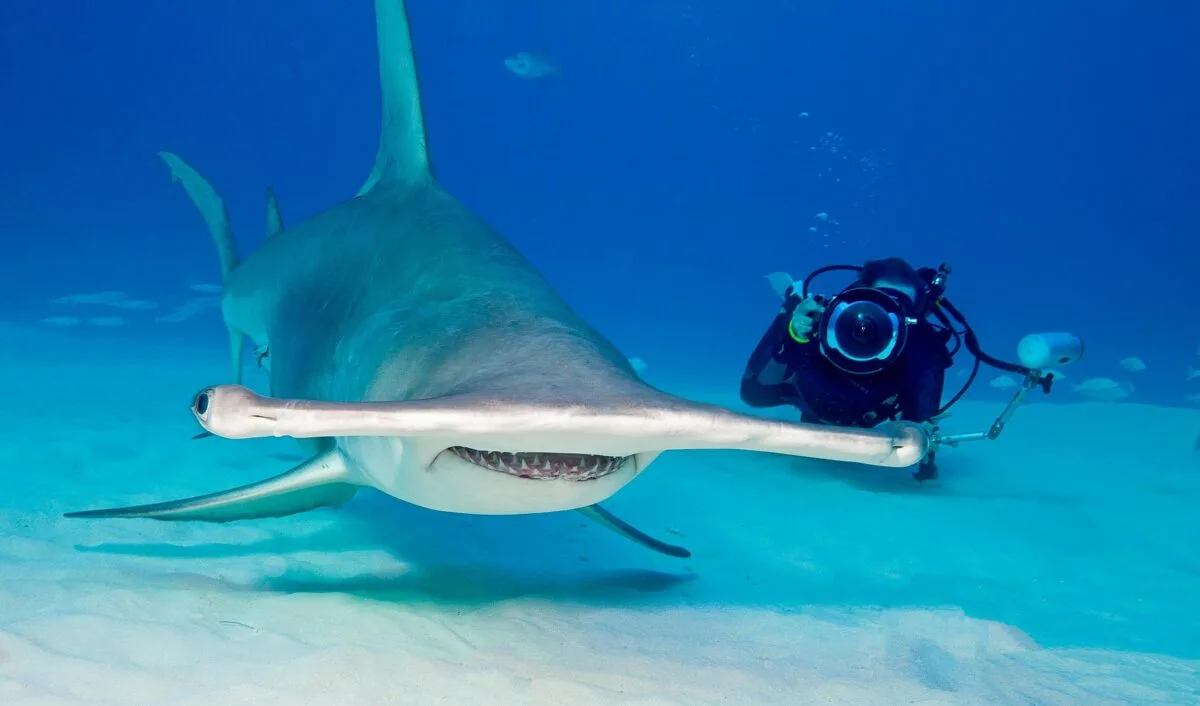Are you looking for the best places to dive with hammerhead sharks?
Diving with hammerhead sharks is one of the ultimate scuba diving experiences. You’ll never forget the first time you come face to face with this bizarre creature. They look like something out of a science fiction movie.
These strange yet majestic animals truly need to be experienced in the wild. If you want to read more about the shark diving industry read our dedicated article Shark Cage diving: A sinking industry?
Witnessing the magnificent presence of just one of these incredible creatures is truly awe-inspiring, but imagine the sheer wonderment of being surrounded by swarms of them gracefully gliding through the water, creating an unforgettable spectacle that takes your breath away!
Join us as we unveil the Best Places to Dive with Hammerhead Sharks, where you can immerse yourself in the midst of these mesmerizing beings and experience nature’s most captivating show.
Follow along with the article or click on the heading you would like to jump to:
Key Points
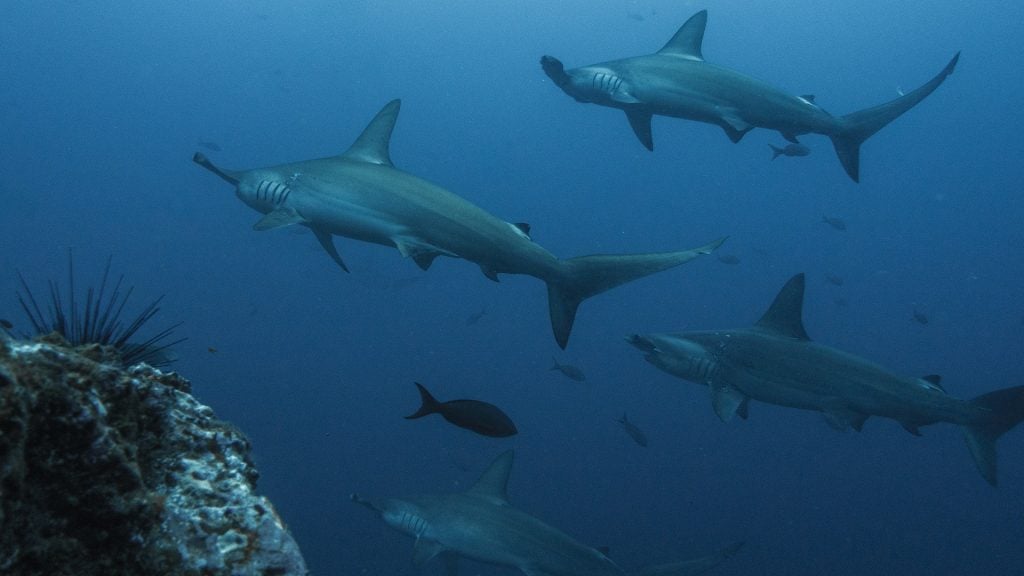
| Best Places to Dive with Hammerhead Sharks | When to Go | Operators |
|---|---|---|
| Bimini, Bahamas | Hammerheads found year-round, peak in December to February | Bimini Scuba Center, Epic Diving, Big Game Club Bahamas |
| Galapagos Islands, Ecuador | No longer supports diving | Not applicable |
| Cocos Islands, Costa Rica | May to September | Cocos Dive, Aggressor Adventures, Sea Hunter |
| Layang Layang, Malaysia | March to May | Island Diver Layang Layang |
| Rasdhoo Atoll In The Ari Atoll, Maldives | December to April | Rasdhoo Divers, Macana Maldives, Scuba Spa |
| Rangiroa, French Polynesia | January and February | Rangiroa Divecenter, Scuba Dive Rangiroa, The Six Passengers |
| Malpelo Island, Columbia | Peak: December | Malpelo Tours |
| Daedalus Reef, Egypt | June to September | Dive Fleet, Discover Hammerheads, Eagle Divers |
| Socorro Island, Mexico | April to June | SolmarV, Nautilus Dive Boards |
| Alphonse Island, Seychelles | March to May and October to December | Alphonse Islands Diving |
Best Places to dive with Hammerhead Sharks
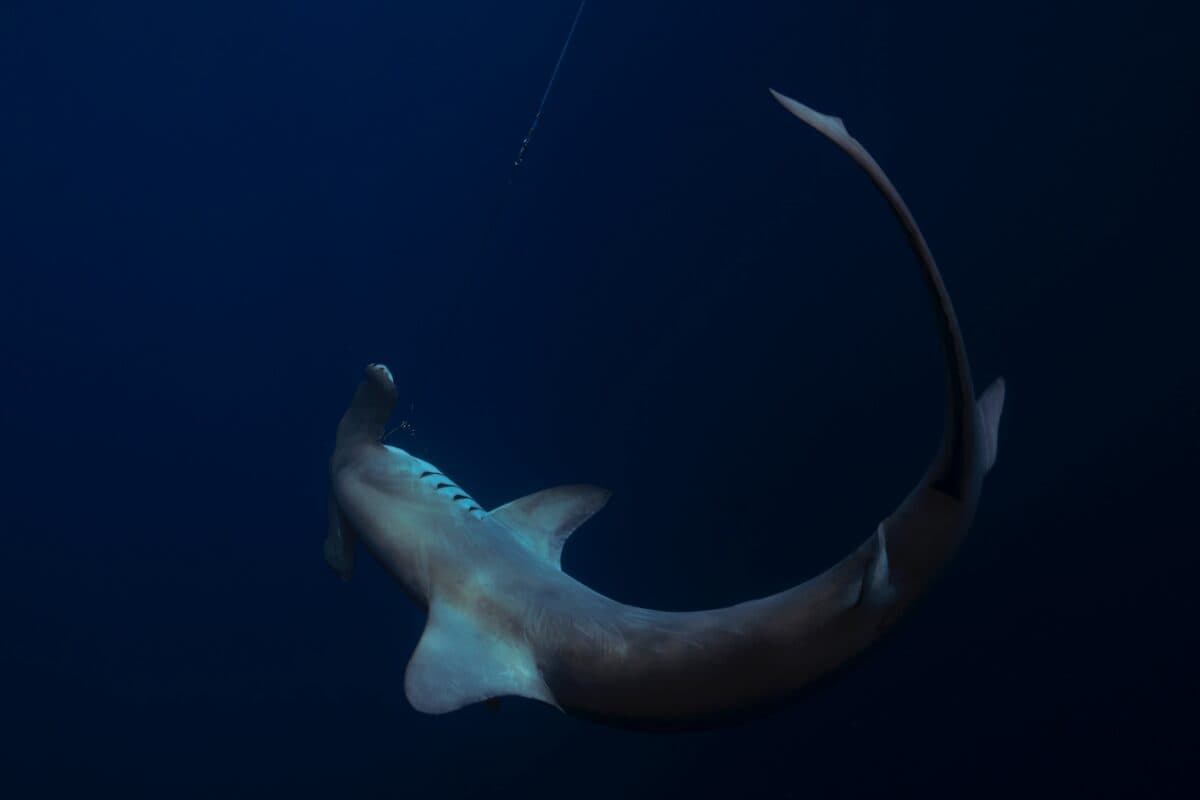
Of the nine species of hammerhead shark, schools of Scalloped Hammerheads and the impressive Great Hammerheads provide the most significant allure for divers.
Have a look at the Best Places to Dive with Hammerhead Sharks:
1. Bimini, Bahamas
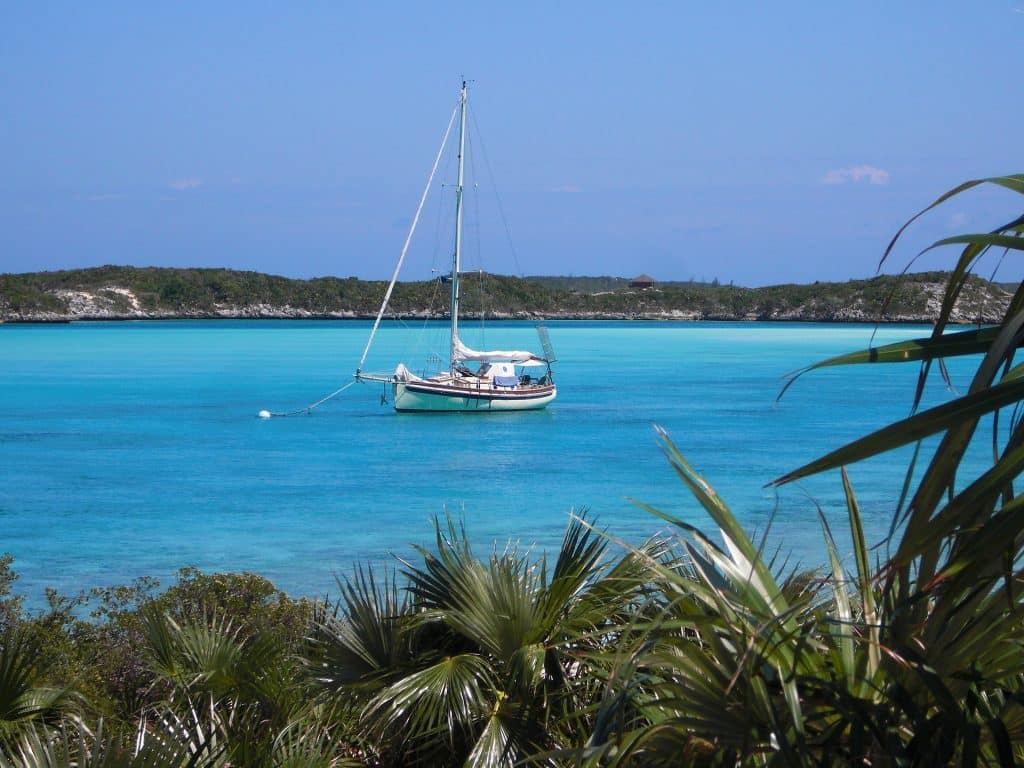
The Bahamas and the Keys during the summer are suitable for hammers. With over 40 shark species, the Bahamas has the most incredible biodiversity in the world and one of the largest populations.
This makes the island state one of the best shark spots for researchers, conservationists, and hobby divers.
The Bahamas earn more than 110 million US dollars annually from shark tourism. The government has recognized the value of sharks as a tourist attraction and is trying to protect them and market them in an effective advertising manner.
When to go
- Hammerheads are found all year in the Bahamas
- Peak: December to February
Operators
2. Galapagos Islands, Ecuador
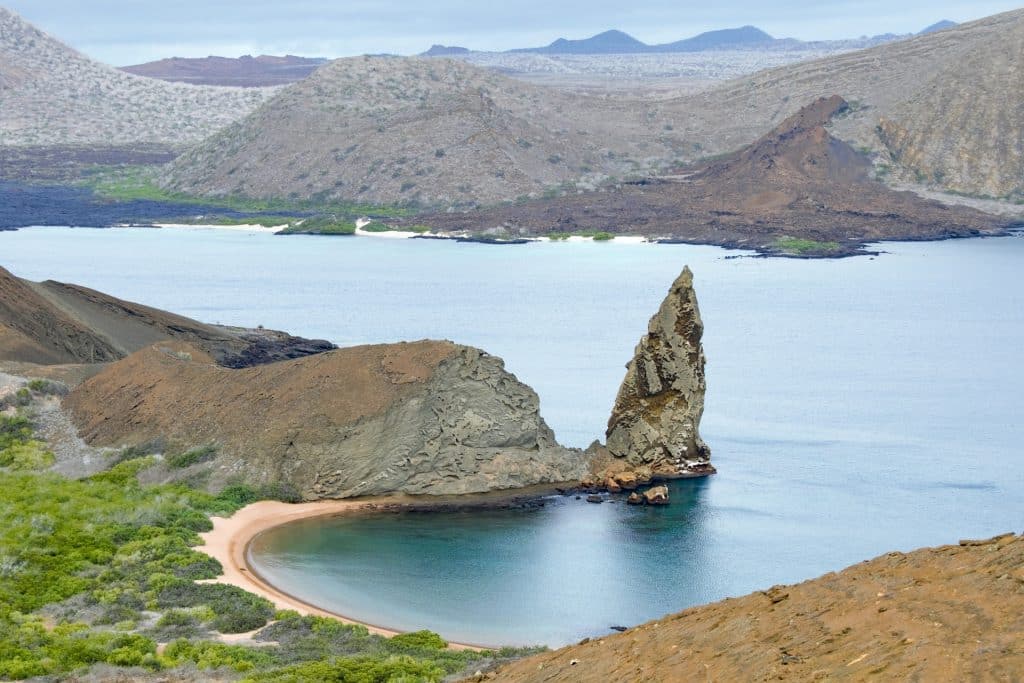
The Pacific Shark Corridor, also called “The Hammerhead Triangle”: the Galapagos Islands, Malpelo Island, and Cocos Island.
These three locations are known as the hammerhead triangle and are the best place to witness hundreds of sharks.
Unfortunately Effective January 9, 2023, the Mexican Government closed the Isla Guadalupe indefinitely to all diving activities, film and television productions. While this is bad news for divers and tourists it is for the protection and conservation of thsi beutiful island and the governments descision should be respected.
If you want to read more about this, read our dedicated article on Shark Diving: A sinking industry?
3. Cocos Islands, Costa Rica
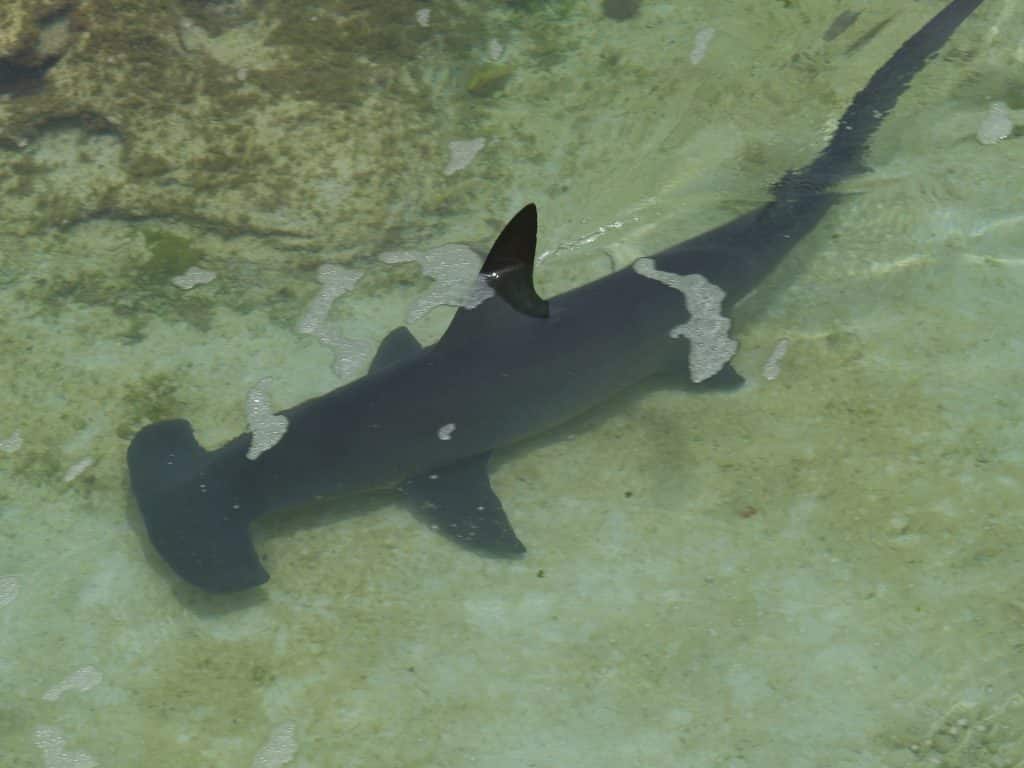
Isla de Cocos – Cocos Island, or as the island is often called: the “Mountain of the sharks.” Almost everyone knows this tropical island in the Pacific Ocean as an excellent spot for big fish.
Cocos Island is located about 36 hours by boat off the coast of Costa Rica and was declared a National Park in 1978 and a “Unesco World Natural Heritage Site” in 1997.
Since 2001 the waters within a radius of 12 nautical miles (22 km) belonged to the protected area of the Cocos Island National Park. In contrast to Malpelo Island, Cocos is beautiful and wild.
The volcanic origin and the associated nutrient-rich soil have created a unique nature and diversity. Deep canyons, steep mountains, and the waterfalls plunging vertically into the sea are reminiscent of the movie “Jurassic Park.”
On the island, 70 endemic plant species and three endemic bird species have been recorded, such as the Coco Island Cuckoo or the Coco Finch. Rats and wild pigs were left over from former attempts to colonize the island.
When to go
- May to September
Operators
4. Layang Layang, Malaysia
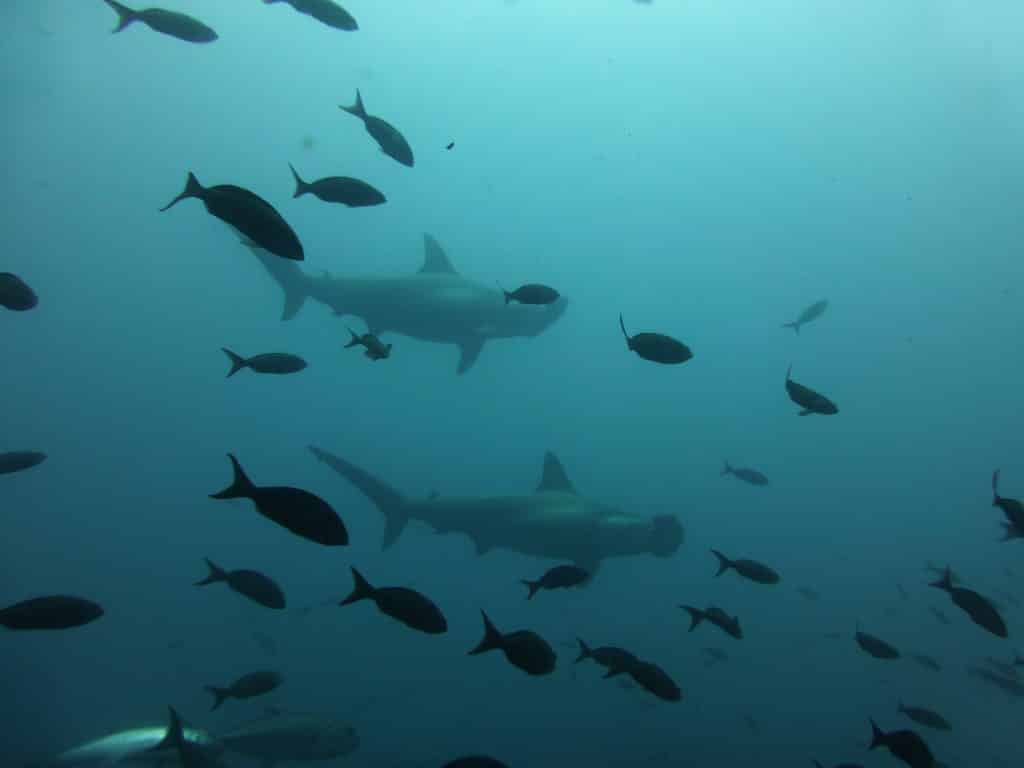
With a circumference of 21 km, the atoll is more than three times as large as the reef around Sipadan. Especially from March to May, Layang Layang is one of the most spectacular dive sites in the world.
During this time, large schools of hammerhead sharks come to the drop-offs at the eastern tip of the atoll. Sometimes you can see over 100 of these fascinating animals. But orcas, pilot whales, thresher-tail sharks, and manta rays are also regularly sighted here.
When to go
- March to May
Operators
5. Rasdhoo Atoll In The Ari Atoll, Maldives
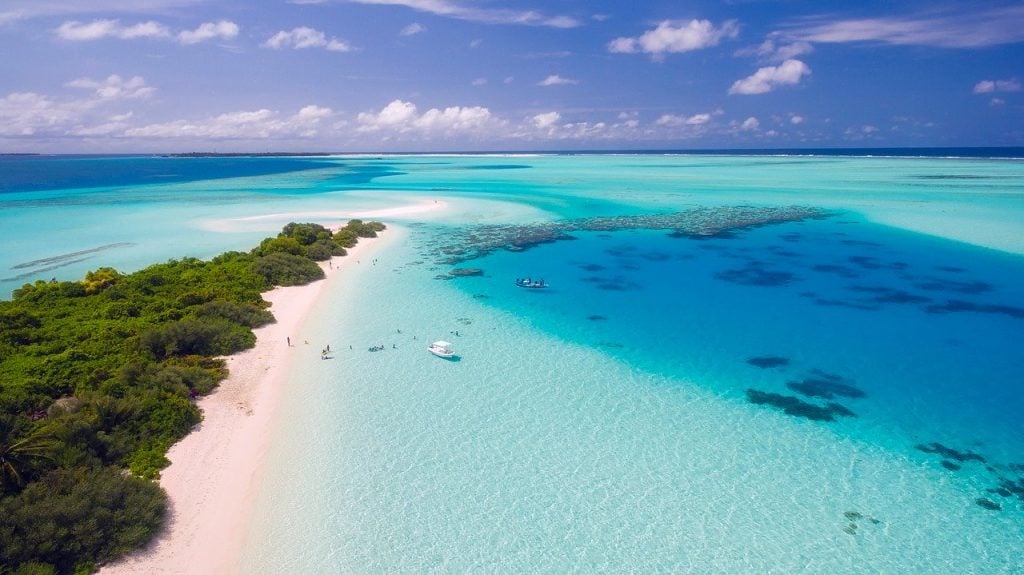
The tiny, ring-shaped Rasdu Atoll or Rasdhoo Atoll is administratively part of the North Ari Atoll, from which it begins only seven kilometers away.
It can therefore happen that the hotel complexes in Rasdu Atoll, such as the Kuramathi Island Resort, are counted as Ari Atoll or North Ari Atoll by various tourism providers.
The best place in the country is around the Rasdhoo Atoll, accessible by liveaboard traveling between South Male and Ari Atoll, and it’s the highlight of any liveaboard trip.
The site is accessible all year round, but the best time for hammerheads is December to April.
When to go
- December to April
Operators
6. Rangiroa, French Polynesia
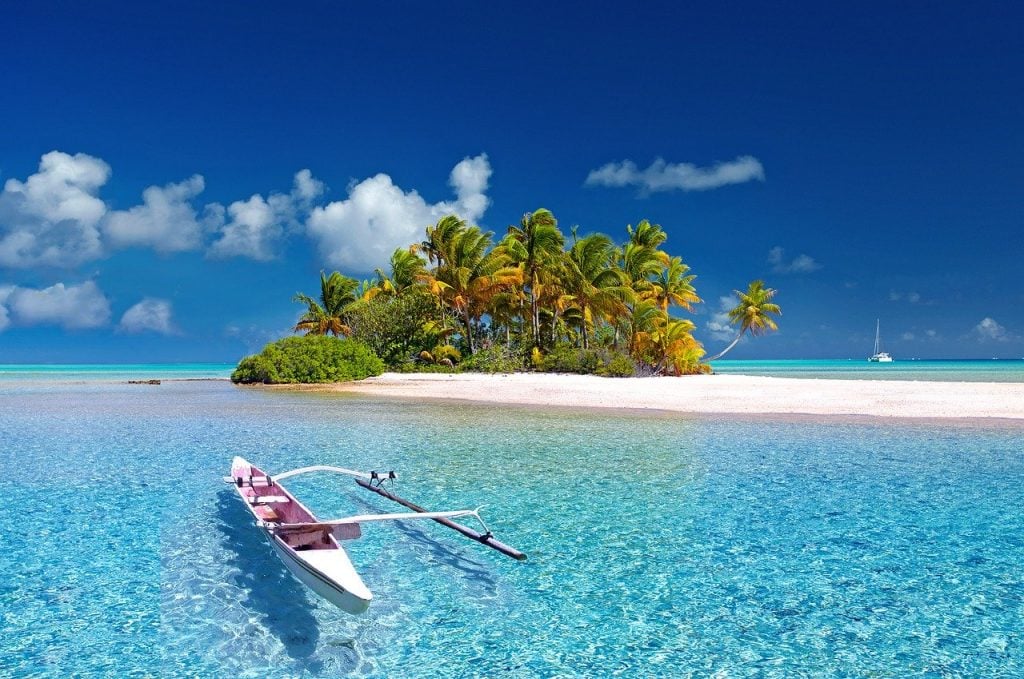
The Tiputa Pass, Rangiroa, is a hotspot for hammerhead shark diving, and a powerful current washes this atoll channel during the incoming tide.
Hundreds of grey reefs & big hammerhead sharks, dolphins, and manta rays…no wish is left unfulfilled here. Also, encounters with lemon and tiger sharks are more the rule. But also, the lovers of corals and smaller fish will get their money’s worth because the reefs are among the most intact in the world.
When to go
- January and February
Operators
7. Malpelo Island, Columbia
Some call it the shark diving capital of the world. The best Hammerhead shark dive sites at Malpelo include The Twins pinnacles, The Freezer wall dive, and La Gringa.
Malpelo belongs to Colombia and has been served exclusively in Colombia since 2018. The journey by boat from Buenaventura takes between 30 and 38 hours, depending on the boat and sea conditions.
Hammerhead sharks are generally part of the standard program and can be observed repeatedly in small groups, from a few animals to huge schools. We have generally seen the largest schools in the southern part of the island,.
One reads a lot about the most prominentme to observe big schools. In December, we could see huge schools migrating into the island with falling water temperatures. But there is no fixed rule, and also, at other times, we were surprised.
When to go
- Peak: December
- Hammerheads can be seen all year round
Operators
8. Daedalus Reef, Egypt
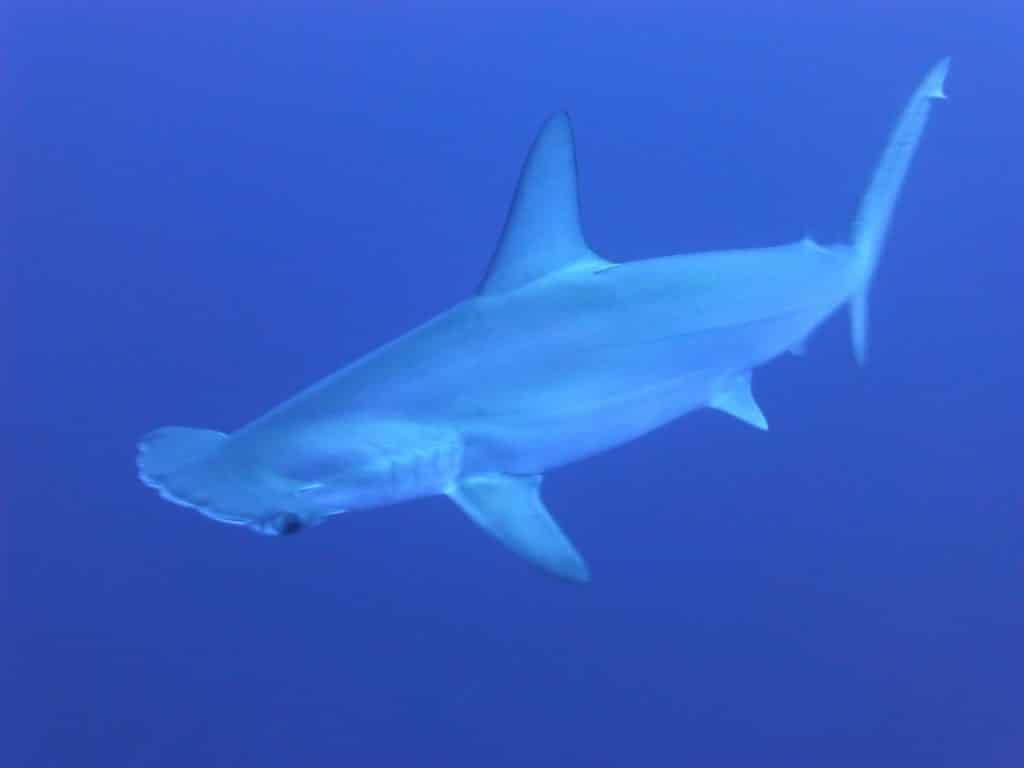
Daedalus Reef is home to hammerhead sharks, several species of mackerel, tuna, moray eels, and dwarf perch. The dive site goes down to depths of 5 to 40 meters, which is suitable for intermediate-level divers as long as they can handle the strong currents.
The diving area around the reef is primarily known for its abundance of big fish. Due to the exposed location on the high seas, large schools of sharks (white tips, grey reef sharks, hammerheads, and thresher sharks) can often be seen here. Legendary is also the mighty Napoleon on the west side. However, special “shark light” are the hammerheads, dozens of which can be seen here on a good day.
When to go
- June to September
Operators
9. Socorro Island, Mexico
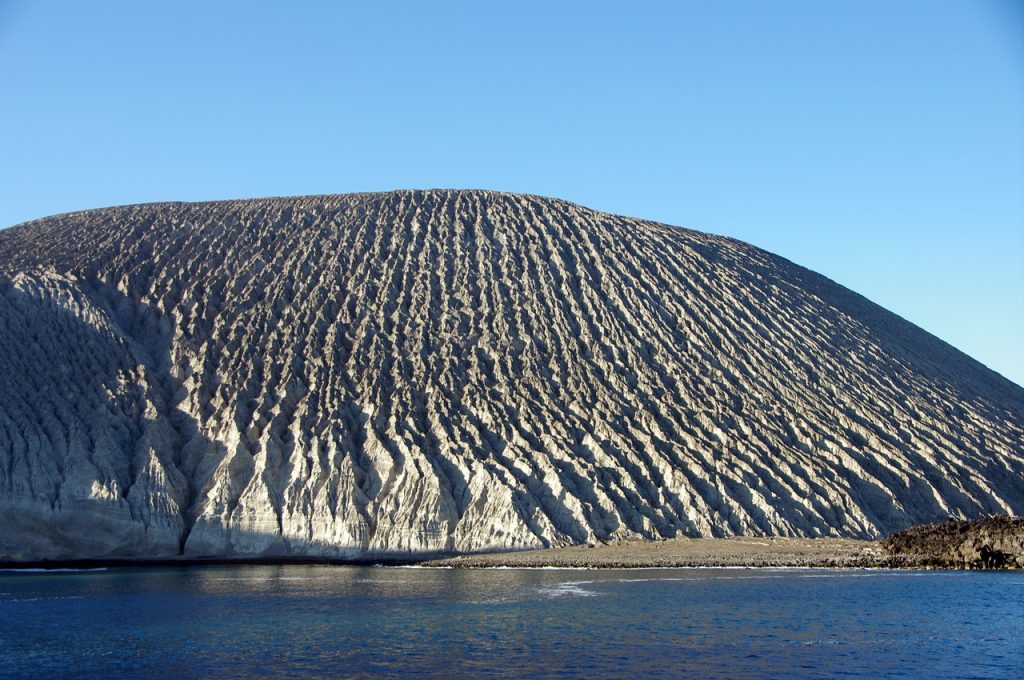
Actual shark diving is offered southwest of Cabo San Lucas in the middle of the Pacific Ocean, far away from any civilization. via Pixabay
In Mexican, the island quartet is a tongue twister: Islas Revillagigedo. More straightforward and better known are the volcanic islands under Soccoro Islands, and many like to speak of the “Mexican Galapagos.” The quality addition is not exaggerated because they are a similar to big fishing areas. Apart from that,, the comparison limps enormously because nothing is offered on land.
When to go
- April to June
Operators
10. Alphonse Island, Seychelles
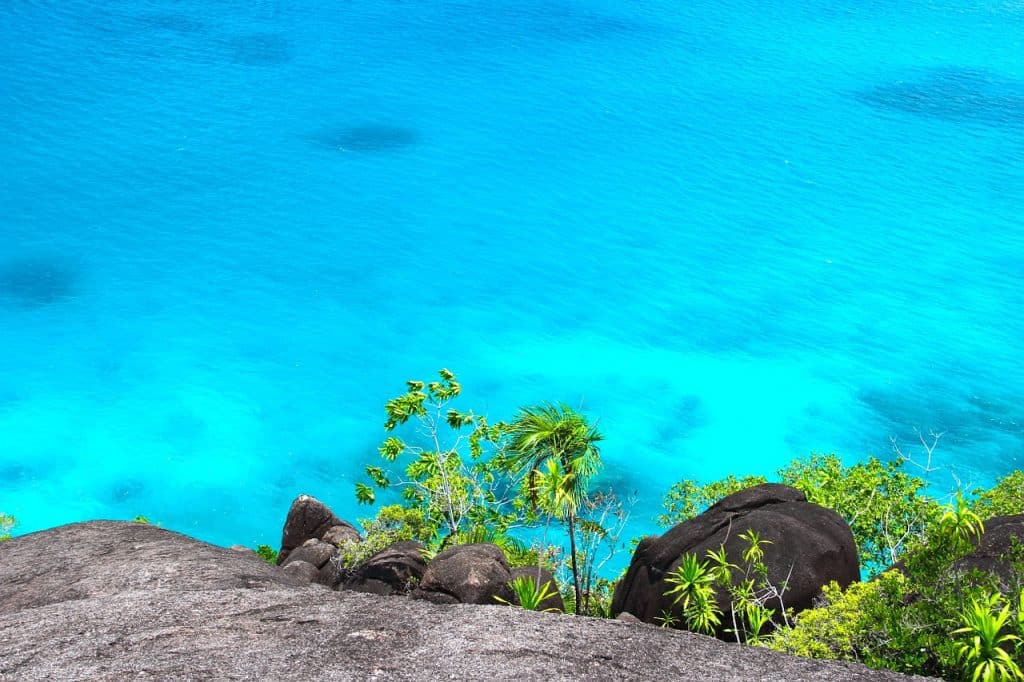
Those who talk about Seychelles usually mean the Inner Islands, to which the three main islands Mahé, Praslin, La Digue, and many other smaller ones belong.
The Outer Islands are uninhabited, apart from the staff of a few conservation organizations and accommodation facilities. These islands and atolls are located 250 to 1150 km from Mahé, and they are all of coral origin.
The Aldabra Atoll is also part of the Outer Islands. It is – next to the Vallée de Mai on Praslin – one of the two Unesco World Natural Heritage Sites in Seychelles and is strictly protected.
When to go
- March to May and October to December
Operators
All about Hammerhead Sharks
Hammerhead sharks, the evocative wonders of our seas! Their unique shape and graceful movements captivate divers who are fortunate enough to swim alongside them in the vast ocean.
These magnificent creatures mostly inhabit warm waters near the shore, and while they might be fearsome to some, they are generally not considered a significant threat to humans. Dive in and marvel at the mesmerizing beauty of these gentle giants as you share a moment of enchantment beneath the waves.
Distinguishing features
Hammerhead sharks are instantly recognizable due to their distinct hammer- or shovel-shaped heads. While there are nine different Hammerhead species (listed below), what unifies them all is their unique head shape.
This remarkable flattened head, referred to as the cephalofoil, is thought to be associated with enhanced vision and sensory perception. They employ this peculiar head shape as a hunting advantage. With eyes positioned at each end of their head, their visual acuity surpasses that of most other sharks, significantly enhancing their prey detection abilities. Along the width of their head, numerous sensors emit electrical signals, aiding them in locating hidden prey beneath the sand.
Conservation
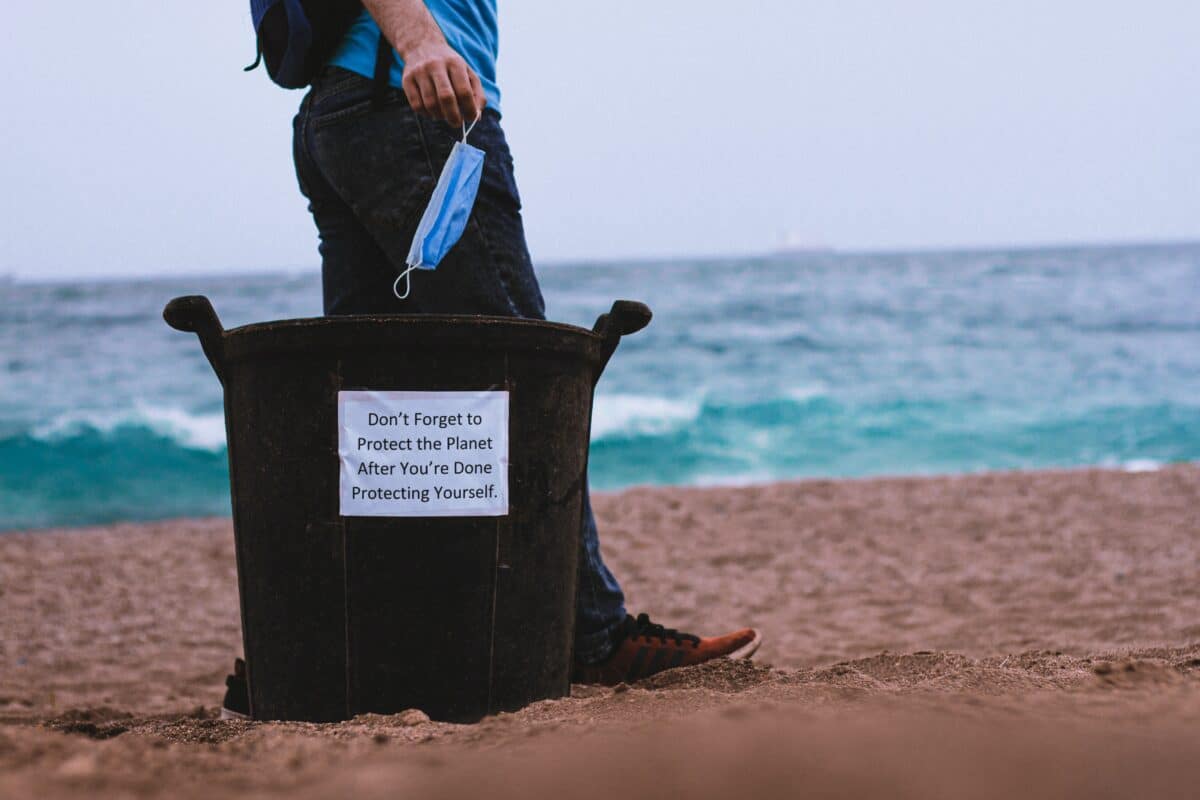
Unfortunately, many species of Hammerhead Sharks are at a high risk of extinction and are on our list of the 22 most endangered sharks in the world.
Hammerhead fins are highly valued as delicacies in several countries. Fishermen often capture these sharks, remove their fins, and discard them back into the ocean. Without fins, the sharks are unable to swim and eventually perish. Human activities pose the most significant threat to all species of Hammerhead Sharks.
The Squat-headed, Scalloped Hammerhead, and the Great Hammerhead sharks are on the endangered species list. Extreme care should be taken in preserving and conserving this shark and its environment.
Strange fact
Believe it or not, the Hammerhead can sport a nice tan! They are one of the very few animals who tan from the sun, and this happens to the shark because Hammerheads often cruise in shallow water or near the surface for extended periods.
Types of Hammerhead sharks
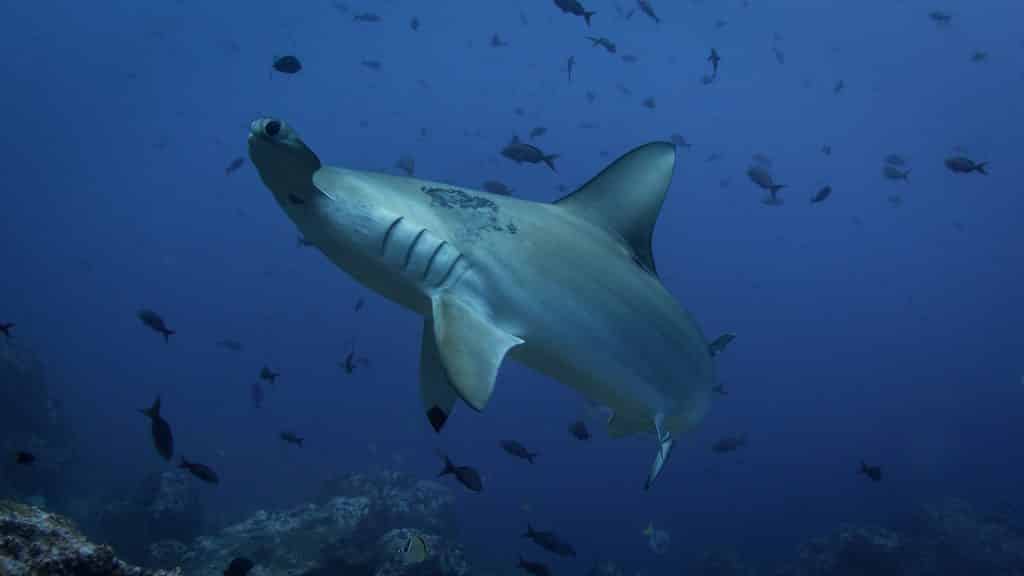
Here you can learn about the nine species of hammerhead sharks. via Pexels
1. Great Hammerhead (Sphyrna mokarran)
The great hammerhead shark is the largest of the nine species of hammerhead sharks. They can reach up to 20 feet, but their average length is about 12 feet. They have a grayish-brown to light gray back and white underside.
They can be distinguished from other hammerheads by their large “hammer,” which has a notch in the middle.
Great Hammerhead sharks live in warm temperate and tropical waters in the Atlantic, Pacific, and Indian Oceans. They can also be found in the Mediterranean, Black Seas, and Arabian Gulf. Hammerhead sharks are generally not dangerous to humans, but great hammerheads should be avoided due to their size.
The IUCN Red List endangers great hammerheads due to their slow reproduction rate, high bycatch mortality, and harvest in shark finning operations. The IUCN encourages the implementation of shark finning bans to protect this species.
2. Smooth Hammerhead (Sphyrna zygaena)
The smooth Hammerhead is another giant shark that can grow to about 13 feet (4 meters) in length. They have a large “hammer” head but without a notch in their center.
Smooth hammerheads are a widely distributed Hammerhead shark—they may be found as far north as Canada and along the U.S. coast down to the Caribbean and off the coasts of California and Hawaii.
3. Scalloped Hammerhead (Sphyrna lewini)
The scalloped Hammerhead can reach more than 13 feet (4 meters). This species’ head has narrow blades, and the outer edge has a notch in the center and indentations resembling the shell of some scallops.
Scalloped Hammerheads are widely distributed. They are found in the western Atlantic Ocean from New Jersey to Uruguay; in the eastern Atlantic from the Mediterranean Sea to Namibia; in the Pacific Ocean from Southern California to South America and off of Hawaii; in the Red Sea; the Indian Ocean; and the western Pacific Ocean from Japan down to Australia.
4. Scalloped Bonnethead (Sphyrna corona)
The Scalloped Bonnethead or mallet head shark is a small shark that reaches maximum lengths of about 3 feet (1 meter).
Scalloped Bonnethead sharks have a head that is more rounded than some other hammerheads and is shaped more like a mallet than a hammer. These unknown sharks are found in a relatively small range, specifically in the eastern Pacific from Mexico to Peru.
5. Winghead Shark (Eusphyra blochii)
The winghead shark, or slender Hammerhead, has a vast, wing-shaped head with narrow blades. These sharks are medium-sized, with maximum lengths of about 6 feet (1.8 meters).
Winghead sharks are found in shallow, tropical waters in the Indo-West Pacific from the Persian Gulf to the Philippines and from China to Australia.
6. Scoophead Shark (Sphyrna media)
The Scoophead shark has a broad, mallet-shaped head with shallow indentations. These sharks can grow to a maximum length of about 5 feet (1.5 meters).
Little is known about the biology and behavior of these sharks, which are found in the eastern Pacific from the Gulf of California to Peru and in the western Atlantic Ocean from Panama to Brazil.
7. Bonnethead Shark (Sphyrna tiburo)
Bonnethead sharks are about the same size as Scoophead sharks—they can reach a maximum length of about 5 feet (1.5 meters).
The bonnethead has a shovel-shaped head with a smooth edge. The head shape of the bonnethead may help it more easily find prey. A 2009 study found bonnethead sharks have nearly 360-degree vision and excellent depth perception!
These social sharks are most often found in groups numbering from 3 up to 15 sharks.
Bonnethead sharks are found in subtropical waters in the Western Atlantic Ocean from South Carolina to Brazil, the Caribbean and the Gulf of Mexico, and the Eastern Pacific Ocean from southern California to Ecuador.
8. Smalleye Hammerhead (Sphyrna tudes)
Smalleye hammerhead sharks also reach a maximum length of about 5 feet (1.5 meters). They have broad, arched, mallet-shaped heads with deep indentations in their center. Smalleye hammerheads are found off the eastern coast of South America.
9. Whitefin Hammerhead (Sphyrna cardi)
Whitefin hammerheads are giant ones that can reach a maximum length of more than 9 feet (2.7 meters). Whitefin hammerheads have broad heads with narrow blades. These sharks are found in tropical waters in the eastern Atlantic off the coast of Africa.
Diving with Hammerhead sharks
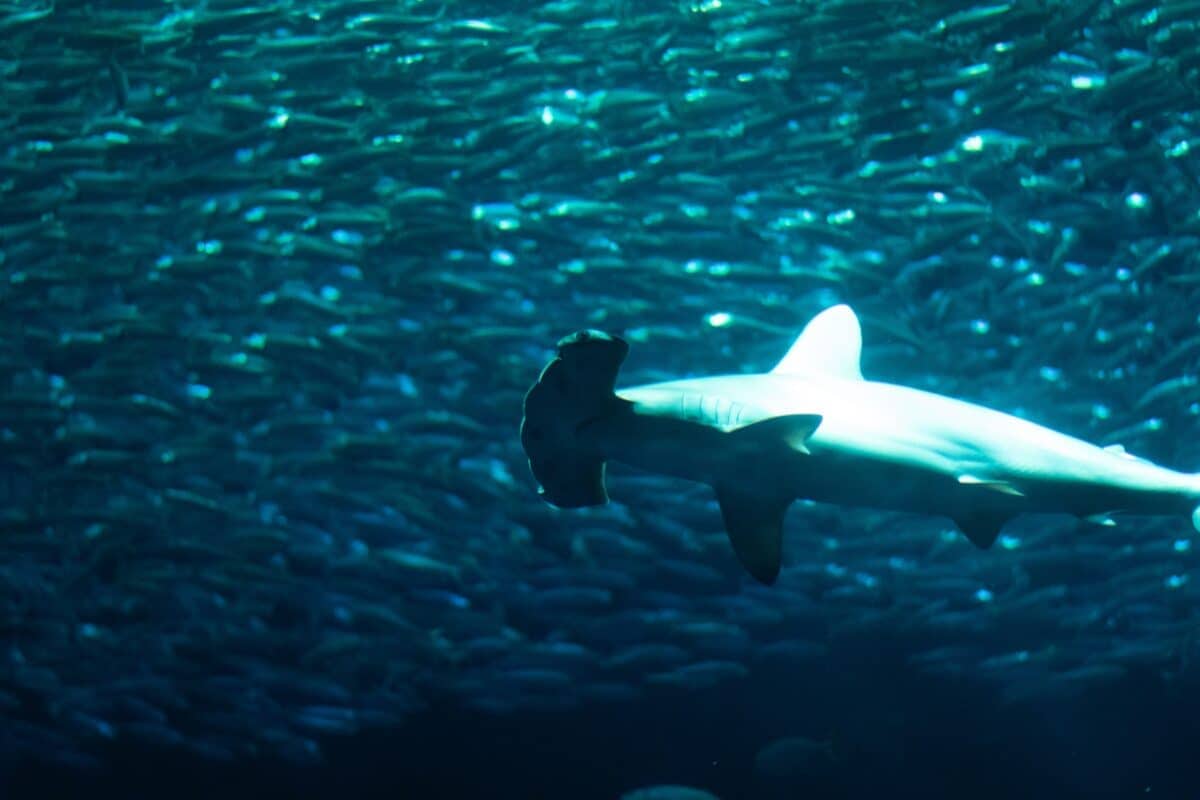
After hearing the statement, “I want to go swimming with sharks,” most people’s first reaction would be, “Are you crazy?!” via Pixabay
While it is true that any brave heart who decides to dive alongside the monster from Jaws should be on their guard, it is still very possible to go diving with a shark and live to tell the tale. And talk about an adrenaline rush!
If you are seriously considering an underwater experience with one of the world’s most famous predators, read further to find the best places to dive with Hammerhead sharks.
Safety
Hammerheads are not aggressive and aren’t considered dangerous to humans. Although the sheer size and predatory nature of the Great Hammerhead mean caution should always be taken when diving with these prehistoric giants.
Although rare, shark attacks have been documented, particularly in remote diving locations. These incidents are infrequent, with only three of the nine Hammerhead species (Great, Scalloped, and Smooth Hammerheads) having ever exhibited aggression toward humans. Typically, these sharks pose no threat to divers in open waters.
It’s important to note that Hammerheads often display warning signs before an attack, such as erratic behavior. Experienced divers are trained to recognize these signals and respond appropriately when encountering an agitated Hammerhead Shark.
Summary of the Best Places to Dive with Hammerhead Sharks

Hammerhead sharks have all-around visibility and excellent depth perception thanks to their unusual head shape.
Researchers at Florida Atlantic University in Boca Raton and the University of Hawaii in Manoa have discovered this in comparative experiments.
Also have a look at Do Sharks Have Tongues?, Is There Such a Thing as Cute Sharks? or all about Sharks.
Frequently Asked Questions (FAQs)
Diving with hammerhead sharks is generally safe as they are not aggressive towards humans. However, caution should always be exercised, especially with larger species like the Great Hammerhead. Trained divers should be aware of warning signs and safety protocols when encountering these sharks in their natural habitat.
Hammerhead sharks are considered safe to swim with, but it is essential to follow proper guidelines and dive with experienced professionals. While they are not typically a threat to humans, any wild animal should be respected and approached with care.
Hammerhead sharks have rarely attacked humans, and there are very few documented cases. Most species of hammerhead sharks are not dangerous to humans, and they are not known for aggressive behavior towards divers.
Hammerhead sharks are known to dive to various depths depending on the species and their habitat. Some species, like the Great Hammerhead, can reach depths of up to 500 meters (1,640 feet) when searching for prey.
Join our Forum for free today!

- Third Elk Incident in Two Weeks in Estes Park, Colorado and How to Stay Safe - July 4, 2024
- 17 Animals That Mate For Life - June 24, 2024
- 13 Animals That Lay Eggs (Some Might Surprise You!) - June 16, 2024

